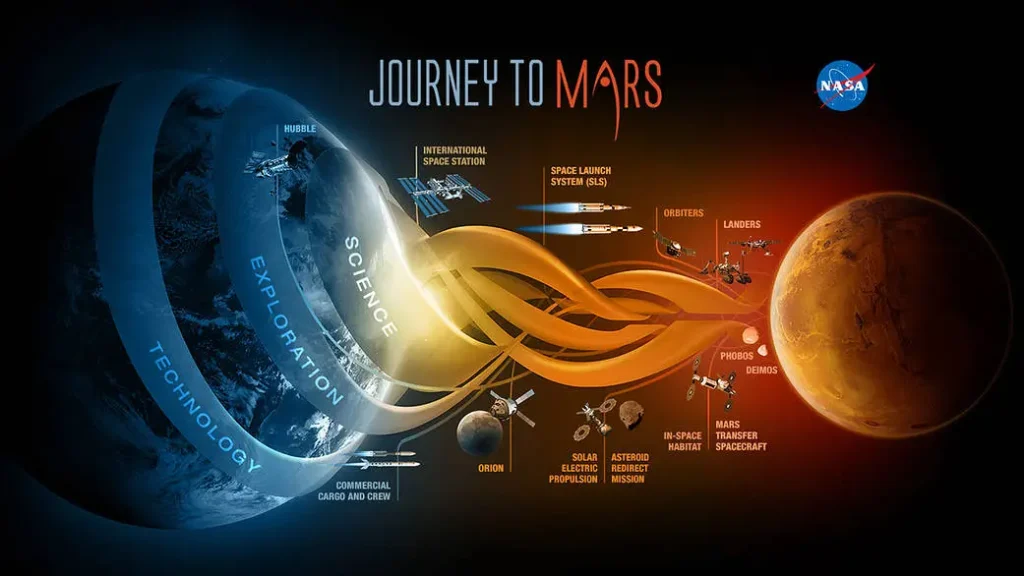SYLLABUS
GS-3:Awareness in the field of space.
Context: Recently, the New Glenn orbital launch vehicle successfully completed its second mission, deploying NASA’s Escape and Plasma Acceleration and Dynamics Explorers (ESCAPADE) twin-spacecraft into the designated loiter orbit.
More on the News
- Blue Origin (American space company) launched its New Glenn heavy-lift rocket from Cape Canaveral, carrying NASA’s twin EscaPADE Mars spacecraft.
- The mission marked the rocket’s second flight and its first operational mission for a paying customer.
- The mission represents New Glenn’s first full success in both satellite deployment and booster recovery.
- The booster recovery demonstrated Blue Origin’s reusable launch capability for the first time.
- On its first flight in January 2025, New Glenn reached orbit but did not succeed in landing the first stage on the recovery platform.

Key Highlights of NASA’s Mission
- The EscaPADE spacecraft will travel for a year near Earth before using a gravity assist to begin its journey to Mars in 2026.
- The two orbiters will reach Mars in 2027 and begin an 11-month study of its upper atmosphere and magnetic interactions.
- The mission will investigate how the solar wind interacts with the Martian environment and contributes to atmospheric loss.
- The mission will also provide insights about Martian space weather and help NASA better understand the conditions astronauts will face when they reach Mars.
- The study aims to improve scientific understanding of how Mars evolved from a wet planet to a dry one.
- The twin EscaPADE spacecraft will provide synchronized observations of Mars for the first time.
- In addition, ESCAPADE will provide more information about Mars’ ionosphere — a part of the upper atmosphere that future astronauts will rely on to send radio and navigation signals around the planet.
Significance of the Project
- Mars Exploration: ESCAPADE is one of the first missions to use dual, synchronized orbiters to study interactions between a planet and the solar wind, improving 3D modelling of Martian atmospheric loss.
- Support for Future Mars Missions: Data from ESCAPADE will support mission design for MAVEN (Mars Atmosphere and Volatile Evolution) follow-up missions and help refine long-term Mars habitability and atmospheric evolution models.
- Enabling Human Exploration of Mars: The twin Mars orbiters will generate crucial scientific insights that support future human missions to Mars.
| UPSC Mains Practice QuestionThe New Glenn NG-2 mission marks an important milestone in the evolution of commercial heavy-lift launch systems. Discuss how such private-sector capabilities can influence the future of interplanetary exploration, cost efficiency, and strategic space partnerships. |
Strengthening Commercial Participation in Deep-Space Exploration: The mission strengthens the role of commercial companies in NASA’s planetary and lunar exploration programs.


